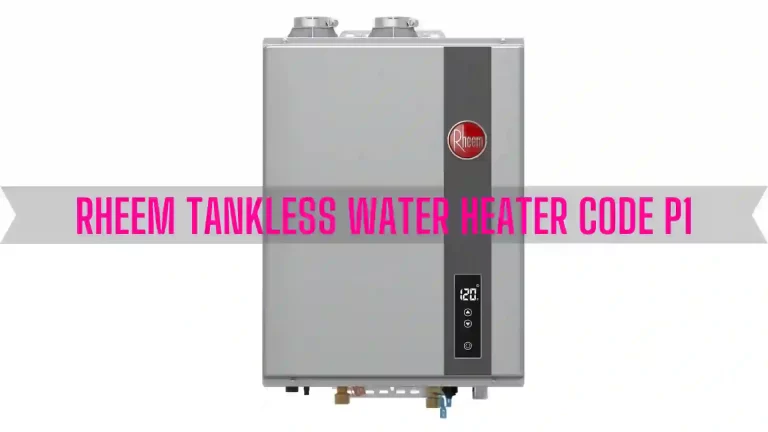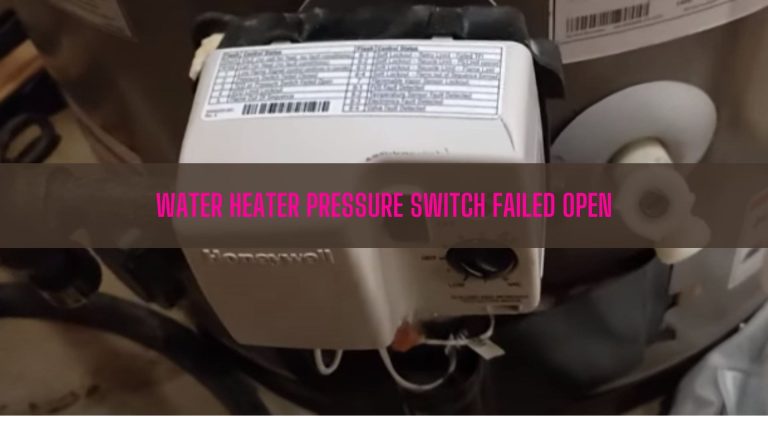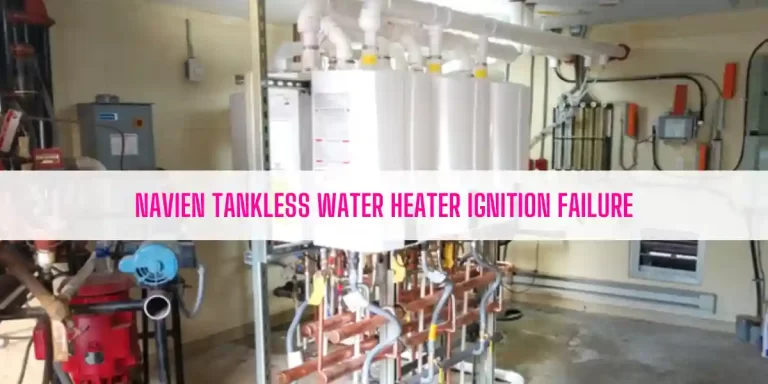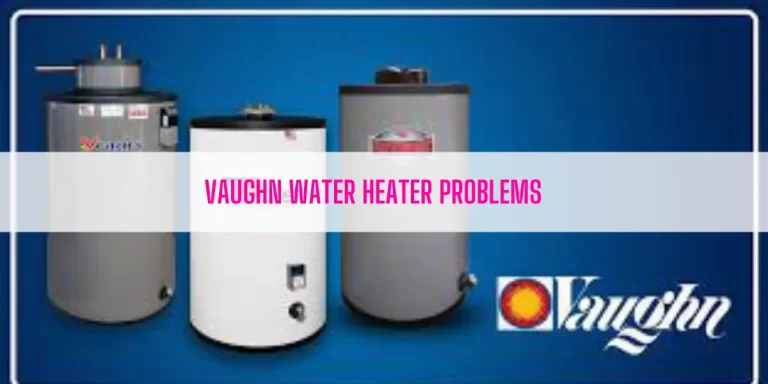Bosch Tankless Water Heater Troubleshooting [A Complete Guide]
This is a complete guide on Bosch Tankless Water Heater Troubleshooting.
What you are going to explore from this article:
- 7 common problems of Bosch Tankless Water Heater and their solutions
- How do you reset the Bosch Tankless Water Heater?
Without further ado, let’s dive in.
Table of Contents
- Bosch Tankless Water Heater Troubleshooting [7 Problems & Solutions]
- How Do You Reset The Bosch Tankless Water Heater?
- End-Note
Bosch Tankless Water Heater Troubleshooting [7 Problems & Solutions]
This chapter will describe 7 common problems of Bosch Tankless Water Heater. Plus, you will learn the way of resolving those issues.
1. Burner Doesn’t Ignite When A Hot Water Faucet Is Opened
The burner won’t come on even when a hot water faucet is opened due to the following reasons:
- Your water heater may receive no power.
- Fuse in the control board goes blown out.
- The cold water inlet connection is not plumbed correctly.
- The hot water demand your unit requires to activate it may not be met.
- The inlet filter screen gets dirty.
- There is an obstruction in the water paths.
- Plumbing crossover
How To Fix:
If you want your tankless unit to ignite again, you must resolve those issues.
Fortunately, I already published an article on Bosch Tankless Water Heater Won’t Ignite.
In that guide, I provide every troubleshooting step you need to take to resolve the igniting issue. So, read that article and make your tankless unit ready to get hot water out of it.
2. Water Is Too Hot
Getting scalding hot water out of your tankless unit! If yes, I think the temperature you set is too high.
Either way, the gas you use to fuel up your water heater doesn’t match the gas type recommended by the manufacturer.
On the other hand, if you have a Bosch Electric Tankless Water Heater, the following culprits are responsible for the excessively hot water output.
- Temperature dial set too high
- Obstructions in the plumbing
- Too warm inlet water temperature
How To Fix:
Start with checking the set temperature you choose for the water heater. If it’s too high, decrease the temperature by pressing the down symbol. Keep touching the down symbol until the desired temperature is displayed.
Next, verify your water heater is getting the correct type of gas to power up the unit. In this case, take a look at the rating plate to see what type of gas the manufacturer recommends. You can find the rating plate on the left side of the cover.
However, if you own an electric unit and get too hot water, ensure you don’t set the temperature dial to a higher setting.
Regarding a higher temperature setpoint, just turn the temperature dial (it’s on the bottom of the water heater) counterclockwise to reduce the temperature.
Besides, your electric tankless water heater will also heat the water at scalding heat if there is a restriction in the plumbing. And guess what, the obstructions in the water path restrict the flow of water through the unit causing overheating.
That’s why, I recommend you check the water paths like shower heads, inlet filter screen, and faucet aerators for blockage. Then, clean that obstruction from the plumbing.
Nonetheless, ensure the unit is not being fed with preheated water or recirculation applications. You can also try increasing the water flow wherever possible. It’s also worth replacing the low flow shower heads and faucet aerators with higher ones.
3. Water Isn’t Hot Enough
Getting lukewarm water out of your Bosch Tankless Water Heater? Then, the following reasons are to blame:
- Selected temperature on the unit is low.
- The gas you use to feed the water heater doesn’t match the recommended gas type.
- Gas pressure goes out of specifications
- The inlet gas particle screen or filter gets blocked by debris
- A plumbing crossover
How To Fix:
First off, ensure the temperature you choose for the water heater is high enough. If not, keep pressing the down symbol until the desired temperature is displayed.
Next, check the rating plate and verify your feed the unit with the correct type of gas.
Thirdly, check the gas pressure and ensure the pressure is in accordance with specifications.
If you don’t know how to check the gas pressure, read this guide on Bosch Tankless Water Heater Error Codes. In that article, I broke down the way of measuring the gas pressure under Error Code A9 section.
Fourthly, inspect the inlet gas particle screen for blockage and remove the restrictions.
Lastly, check the plumbing for crossover.
Regarding this, turn the cold water supply off to the water heater. Then, turn on every hot water faucet served by the unit.
Wait for 10 minutes and check every faucet for water flow. No water flow should be flowing. If any continuous flow of water comes, I bet there is a crossover and it must be corrected.
4. Low Water Flow or Pressure
You will experience reduced water flow or pressure on your water heater due to the following reasons:
- Using too many hot water applications at once
- The selected temperature on the heater is set too high
- Inlet filter screen gets dirty
- Obstructions in the water paths
On the flip side, if you have an electric unit from Bosch, I think you set the outlet shut-off valves too low. Consequently, the water flow or pressure gets reduced at the water heater.
How To Fix:
Generally, Bosch Gas Tankless Unit will effectively support 2 to 2.5 GPM showerheads simultaneously or multiple sink applications. It will drop the water pressure when you run multiple hot water applications at once.
So, it’s recommended to run less appliances when operating the water heater so that it doesn’t exceed its capacity.
Secondly, the unit will close the motorized water valve if the selected temperature on the unit is set too high. As a result, it will reduce the water flow rate to reach the selected output temperature.
Thirdly, a reduced water flow can also be the result of a dirty inlet filter screen. To increase the water pressure, you must clean the inlet filter screen.
Regarding this, locate the inlet filter screen first. You can find it on the top of the water heater at the cold water connection. Then, shut off the installer supplied water shut-off valve.
Purge the water using discharge drains and take out the brass hex cap that holds the filter in place. And lastly, clean the inlet filter screen with water and place it into its place.
And last not least, restrictions in the water paths like filter screen, shower heads, and faucet aerators can reduce the water flow through the unit. So, check the water paths and verify there are no blockages.
5. Noisy Burner During Operation
Either a high-pitch or low-pitch noise will come out of your water heater if combustion is not set properly. This actually occurs because of improper gas supply conditions.
In other words, feeding the unit with incorrect gas, improper gas pressure, and improper venting are some culprits behind a noisy burner.
To stop the noise, ensure you fuel up your water heater with the correct type of gas. Turns out, verify both the gas pressure and the venting is within specifications. In this case, I highly recommend you to call a certified plumber to resolve those issues.
6. Hot Water Temperature Fluctuates At Faucet
The hot water temperature goes up and down at the faucet for several reasons.
For example, if the set point temperature on a water heater is too high or the inlet water temperature is over 70-degree F due to geographic location, the water you get out of your tap seems very hot.
In such a scenario, you need to add cold water to bring the water in usable condition. But the heck is adding too much cold water will overpower hot water flow from the tankless unit. Consequently, the water flow goes below the activation point.
And when the water flow goes beyond the activation point, it will shut off the water heater. As a result, you will get nothing but cold water out of the water heater.
In addition, unbalanced pressure in water lines also causes temperature fluctuation at faucets. Restrictions in water heaters, such as a clogged inlet water filter can create unequal pressures between the cold and hot water lines.
In such cases, the lower pressure hot water can be overpowered when mixing in the high pressure cold water at the faucet. As a result, it will shut off the burner as the hot water flow rate falls below the minimum flow rate to activate the unit.
To fix this issue, verify the cold water inlet filter screen is free of dirt and debris.
Furthermore, temperature balancing shower valves may even deactivate the water heater. If the unit’s set point temperature is set too high, the temperature balance shower valve will automatically mix in cold water to reduce the hot water temperature.
When that mixes too much cold water, it will reduce the flow of hot water and cause the unit to go off. That’s why you must make an adjustment to minimize the amount of cold water the valve is adding to avoid this issue.
And last not least, you should also consult your local plumber for effective ways to maintain constant water pressure to the unit when turning on a well system.
7. Error Codes C1, C2, CF, or CE
Error codes C1, C2, CF, or CE will be displayed on your Bosch Tankless Unit because of a too long flue or obstructions in the venting.
How To Fix:
To erase those error codes, verify there are no obstructions in the venting. Also, ensure the venting you install is within specifications.
Next, reset your water heater by pressing the on/off button for three seconds. If one of the error codes is still showing on the controller display, you must perform the gas and air adjustment.
Read More About: Bosch Tankless Water Heater Error Codes
How Do You Reset The Bosch Tankless Water Heater?
It’s not rocket science to reset the Bosch Tankless Water Heater. What you need to do to reset the unit is- just long press the on/off button (for 3 seconds) and it will initiate the start-up sequence.
However, the resetting procedure for Bosch Electric Tankless Water Heater is different. You must locate the reset buttons on each thermal cutout and press them to reset the electric tankless water heater.
To learn more about, read this guide on Bosch Tankless Water Heater Reset Button.
End-Note
Every electric appliance starts malfunctioning over time. And your Bosch Tankless Water Heater is not an exception to that.
Over time, the tankless water heater will go through some problems like the burner won’t come on, it delivers too hot water, or even no hot water at all.
And throughout this guide, I explained all the common problems a homeowner usually experiences with his or her water heater.
As a result, you will find this guide handy and resolve a specific issue without going nuts or spending money on a plumber.
Happy Plumbing!
Read Also:

Eric Alvarez is the head of content on LilDutchUncle.Com. He is an HVAC guy based in El Paso, Texas, United States. He obtained his Bachelor of Science degree from the University Of Texas at El Paso. Years of experience in the HVAC field have taught him many lessons, not the least of which is that the value of quality and knowledge far exceeds any promised initial savings. He has a good standing reputation for superior skills in heating, air conditioning, hot water tanks, and indoor air quality systems.

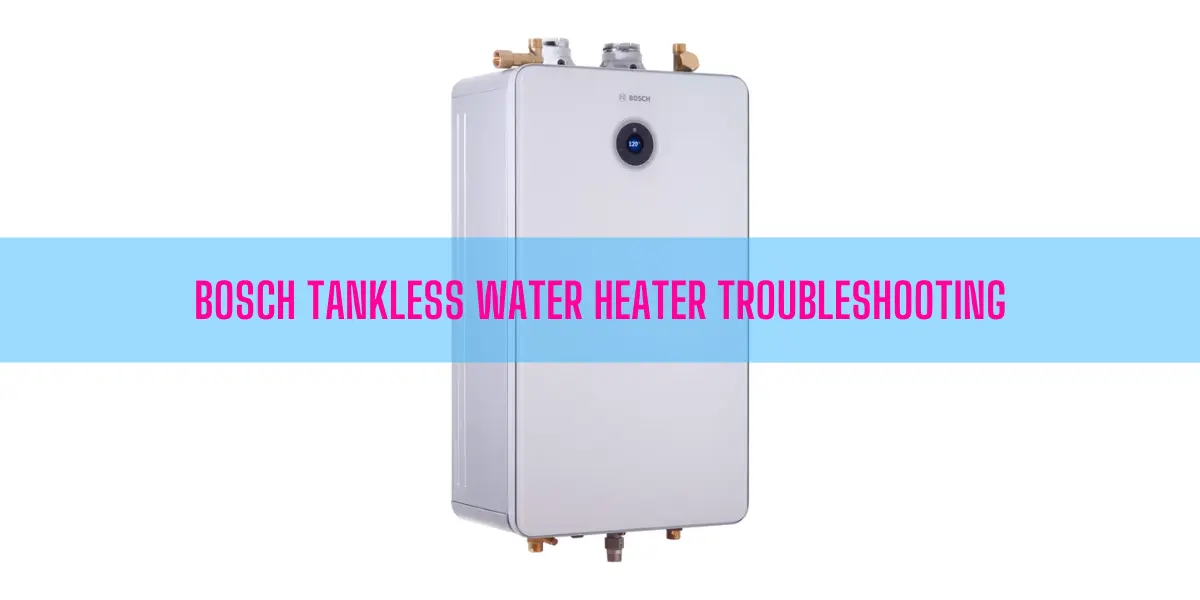
![Rheem Rtex-18 Troubleshooting [Complete Guide]](https://lildutchuncle.com/wp-content/uploads/2023/10/Rheem-Rtex-18-Troubleshooting-Complete-Guide-768x384.webp)
